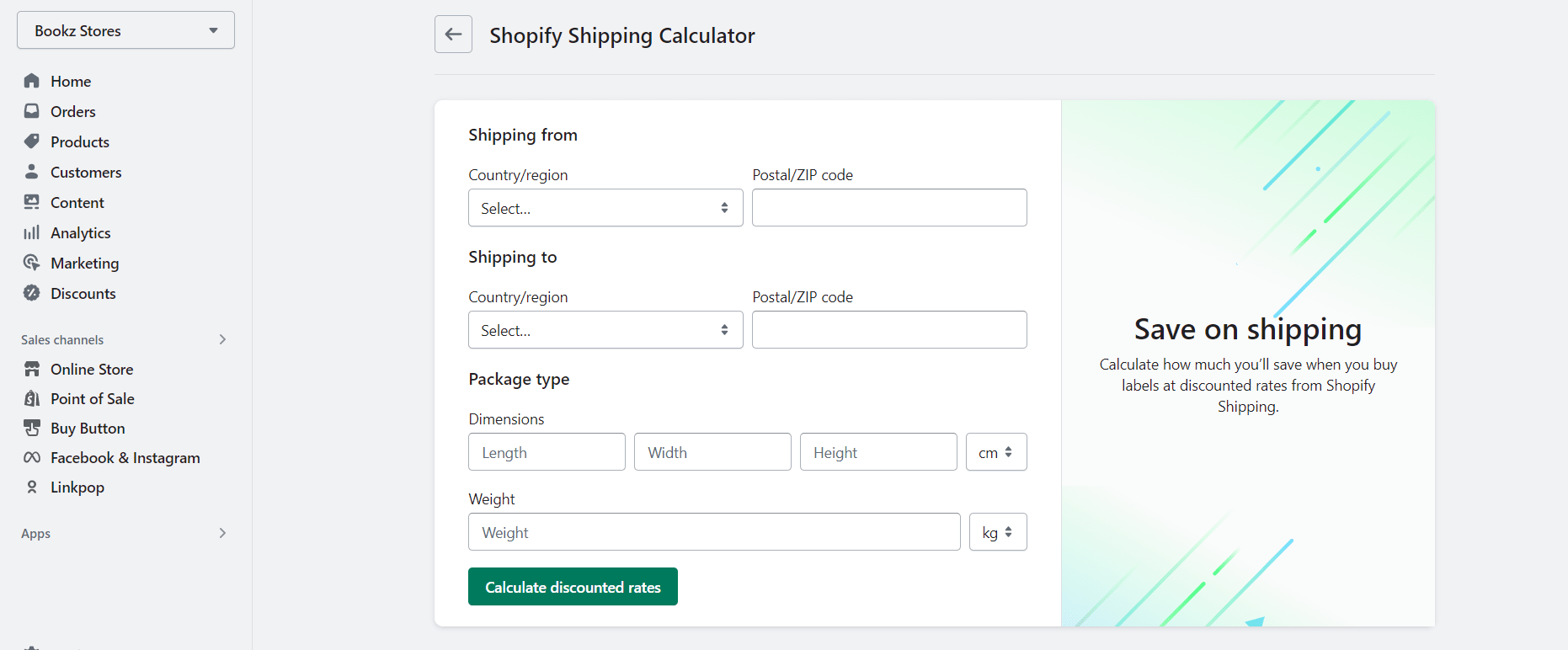As a Shopify merchant, mastering international shipping can be a major game-changer for your business. If nothing else, this skill can give you access to foreign markets, widening your customer base.
This is because when you understand the ins and outs of international shipping, selling to customers abroad will become a seamless experience. And this means more sales for your business.
In this post, we will share some of the benefits international shipping has to offer. We will discuss things to consider before shipping overseas, what it costs, and, most importantly, how to go about it.
So stick around!
Benefits of Shopify International Shipping


Let’s face it; offering international shipping to customers abroad can cost serious money and time. So why bother?
First off, selling to customers abroad gives you a chance to broaden your market reach, allowing you to connect with more customers and ultimately make more sales.
Secondly, shipping products to customers outside your locality can help reduce product returns. Why so? Shoppers who buy products from stores outside their country tend to review their purchases thoroughly before buying, knowing fully well that return will take a long time.
Another reason to ship products overseas is that it can give you an edge over market competition. So when your competitors are busy jostling for an already saturated market, you are busy exploring foreign markets with enormous potential.
Other reasons to consider Shopify global shipping are as follows:
- International markets are growing at an astronomical pace. This means more sales for your store.
- Wider product range. If you sell to shoppers in foreign countries, there is a good chance they will have tastes and preferences different from those at home. This enables you to sell a wider range of products, thus leading to more sales.
- Done well, international shipping can give your store the boost it needs for rapid expansion.
- Beat seasonal sales drought. Selling seasonal products can be tricky. At one moment, you are enjoying bountiful sales. The next moment, everything dries up. Think about the feast and famine cycle.
But by selling abroad, you can consistently make sales due to changing seasons in different countries.
Things to Consider Before Getting Into Shopify International Shipping
Selling globally to a wider audience can be very attractive. However, you need to do your homework to improve your odds of success.
That being said, here are a few important points to keep in mind before venturing into international shipping on Shopify.
Import Regulations and Restrictions
Do you operate your business from the US and want to start shipping to, say China? That’s a great move. But you need to take a chill pill before you make any move.
The reason is that China has some import regulations and restrictions you might not be aware of. For instance, there are certain products you need to obtain a license for before shipping to China.
So before shipping to a foreign country, familiarise yourself with her import regulations and restrictions.
Shipping Cost
Shipping products abroad costs more than shipping locally. So before you proceed to expand your business offshore, it’s important to sort out your shipping cost.
Failure to do this can result in losses. You could end up losing all your profits to high shipping costs.
Import Duties
Shipping abroad attracts an additional cost: import duties.
Import duties depend largely on the country you are shipping to. For example, if you ship products to countries like Australia, Switzerland, New Zealand, etc. where low-value goods tax laws apply, you won’t spend much on import duties.
Other factors that affect import duties include the value of the order, your chosen order fulfillment company, and the nature of the product shipped.
You have the option of passing this cost to your customers or handling them yourself.
VAT
Besides paying for import duties, you will also incur additional costs on VAT(Value Added Tax) when you ship abroad.
VAT charges depend on where your business is based and the country you are shipping to.
Thankfully, Shopify makes it easy to manage VAT charges and other remittances from one spot. If operate your business from Europe, all you have to do is to sign up for the One Stop Shop scheme.
But if you stay outside of Europe, you’d have to opt for the One-Stop Shop (IOSS) scheme.
How Much Does It Cost to Ship Internationally?
When prepping your Shopify store for international shipping, it’s important to have a clear idea of your shipping cost. Knowing your shipping cost will allow you to price your product correctly to make profits.
That said, the cost of international shipping depends on a number of variables, including:
Destination
As a rule of thumb, the farther the country of destination, the pricier the shipping cost. But of course, this is not always the case. For instance, if your business is based in the US, you may end up spending more to ship to Canada than to ship to, say, Bolivia.
In fact, you could even ship for free to faraway China.
The reason for this sharp contrast hinges mostly on your carrier and the trade agreements between both countries.
Cost of Packaging
Packaging costs will also influence your international shipping cost. For example, if you pack your shipments in boxes, you’d spend more. But you might spend less if you use plastic bags.
Carrier
Different carriers charge different prices. For example, the same parcel that will cost you $10 to ship to Canada via CanadaPost can cost you $75 on DHL.
Of course, when it comes to picking a carrier, you get what you pay for. So going cheap might not always be the best option.
Express or Standard Shipping
If you want to ship products faster to customers, you’d have to opt for Express/expedited shipping. In this arrangement, your customers will get their orders in about 2 to 5 days, regardless of where you are shipping to.
For instance, if you ship a package from the US to the UK via UPS expedited shipping, it will arrive in 2 days. But of course, this will cost you more.
If this isn’t feasible, Standard shipping would be a better option. Although it takes more time, Standard shipping is way less expensive than Express shipping. This makes it an excellent choice if you run a dropshipping store.
Shipping Rate Calculator for Shopify
Calculating your shipping rate is an essential skill to run an online store on Shopify. Thankfully, you can easily do so right from your Shopify admin board.
So how do you go about it? First, click this link (you will have to log in to your Shopify account).
Upon clicking, you will be automatically redirected to the Shopify shipping calculator page.


Here, enter your shipping details and then click the Calculate discounted rates button.
Hacks to Ship Internationally and Cheaply on Shopify
As we’ve established earlier, shipping products to foreign countries can cost some serious money. But there are hacks you can use to bring the cost down to the barest minimum.
1. Find the Right Supplier
The supplier you work with influences your shipping cost greatly. The right ones will have the network and experience you can leverage to ship products faster and cheaper.
In addition, working with the right supplier ensures you only ship quality products to your customers, hence lessening product returns which can be expensive to process.
2. Find the Right Carrier
Shipping rates are hardly ever the same for carriers. For example, a parcel that costs you $20 to ship via USPS from the US to Germany can cost you $50 to ship via DHL.
For this reason, it’s important to check shipping rates across carriers before deciding which to go for.
But as a rule of thumb, it’s best to go for USPS (United States Postal Service) if you are keen on getting cheap shipping deals. Your shipment may not move as fast as you want but you will surely save some money.
3. Account for Holidays
If you’ve ever travelled during holiday seasons like Easter or Christmas, you will agree that tickets are usually high during these periods. This also holds true in e-commerce.
Shipping rates often spike during holidays. To beat this upsurge, you’d have to either wait until the holidays are over or charge your customers an extra shipping fee.
4. Be Selective About the Country You Ship To
There are certain countries that are just too expensive to ship to. On top of that, these countries might not have enough purchasing power to drive the volume of sales you want.
As such, you are better off leaving them out and channelling your energy and time to other profitable shipping zones.
5. Use Smaller Packaging Boxes
Shipping rates are often calculated based on parcel weight and size. So the bigger and heavier a parcel is, the more expensive it will cost to ship.
The problem with this arrangement, though, is that if you pack a light parcel into a bigger box, you might be charged more. Plus, you’d incur more cost on packaging.
So to keep your shipping rates low, it’s always best to use small packaging boxes. If possible, use padded mailers instead.
However, this is not to say you should compromise the quality of your packing – just make it smaller if you can.
6. Use a 3PL
Another smart strategy to reduce shipping costs for international orders is by using a 3PL (3rd Party Logistics) service.
A 3PL service provider often handles warehousing, picking and packing, and order fulfillment on your behalf for a small fee, saving you a lot of money.
Furthermore, leveraging a 3PL gives you the opportunity to store your inventory in warehouses closer to your customers.
So let’s say you operate your business from Germany and sell to customers in Canada, all you have to do is work with a 3PL company with a warehouse in Canada. When an order comes in, all you have to do is to notify the company, after which they will pack the product and ship it to the customer.
By doing so, you will reduce the cost of shipping.
International Shipping Times on Shopify
International shipping times depend largely on the country you are shipping to. Shipping to North American countries – such as Canada or Mexico – from the US takes 6 to 10 working days via USPS.
For faster shipping, you’d have to go for UPS or DHL, which takes 1 to 3 business days, even though they cost more.
Shipping within Europe takes 2 to 8 business days via standard shipping services like Chrono Classic, and 1 to 6 business days via UPS or DHL Express.
Then shipping to faraway countries like Australia from the US can take between 6 to 27 working days.
Tips for a Successful International Shipping Campaign
Here are tips to help you push products to foreign markets while keeping shipping costs and returns as low as possible.
1. Ship Quality Products
This might be a no-brainer, but it’s still a major pitfall many Shopify merchants fall for. When you ship quality products to your customers, their trust in your business will grow. Also, they will be less likely to initiate a return.
2. Get Shipping Insurance
It is important to insure your shipment against damage or theft while in transit. If you are on Shopify Plus, you might get free shipping insurance. Otherwise, you have to buy insurance from shipping companies.
UPS, for example, has a dedicated insurance cover for Shopify.
3. Be Selective About Products
There are certain products you shouldn’t be shipping abroad. A good example is ceramic products. They can easily get damaged while in transit. Shipping them can cause you to incur great losses.
Conclusion
Learning how international shipping works on Shopify can put you a step ahead of your competitors. And it can expand your business far beyond your wildest imagination.
Hopefully, the tips we’ve shared in this post will give you the push you need to get going.
Are you getting traffic to your website but can’t convert that traffic into sales? Adoric can help. Adoric comes with several built-in tools designed to help you convert visitors into customers.
Add Adoric to your Shopify website right away to see it in action.




